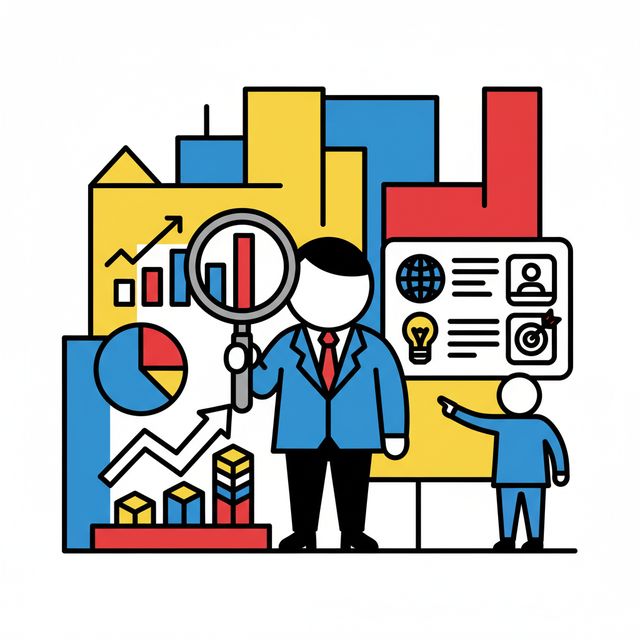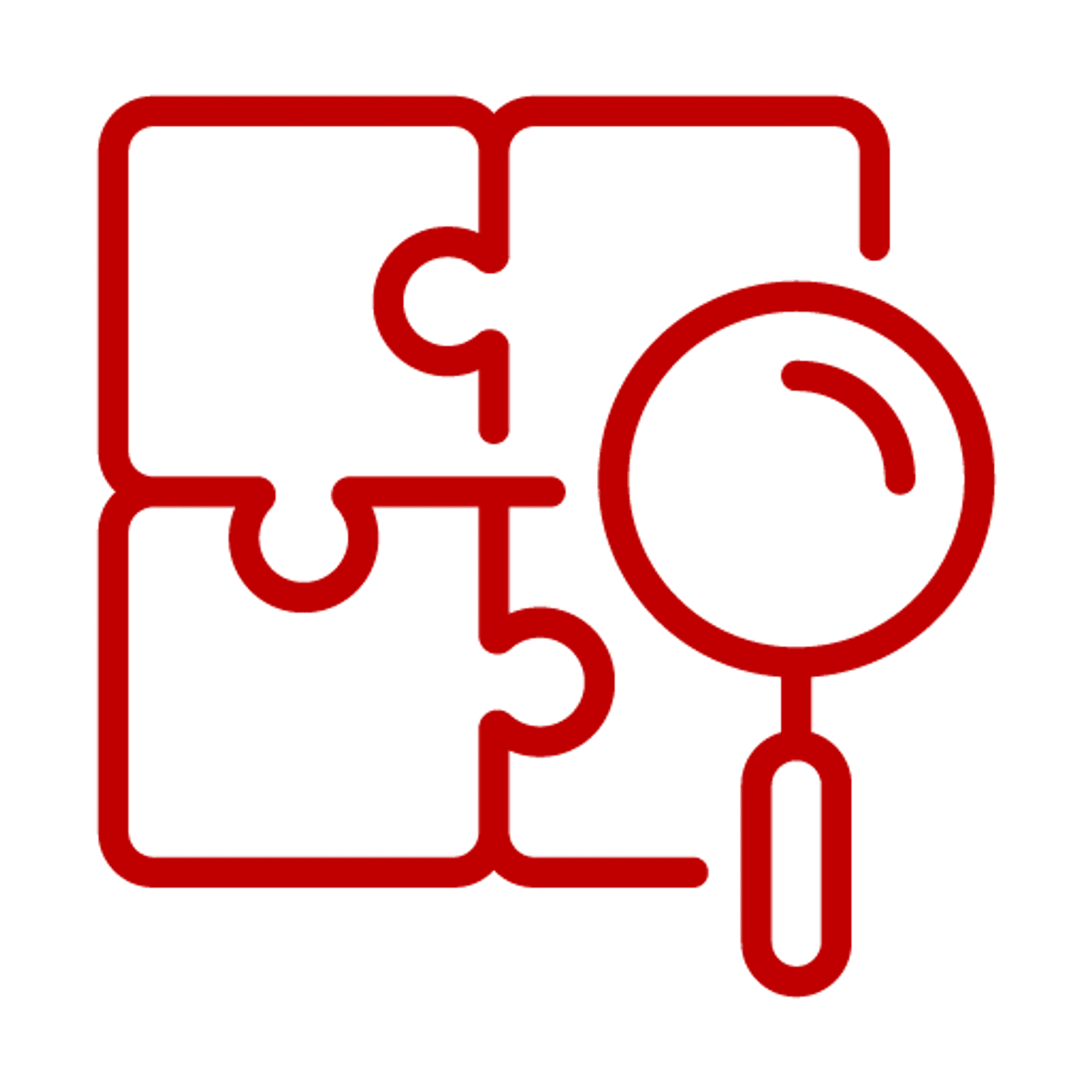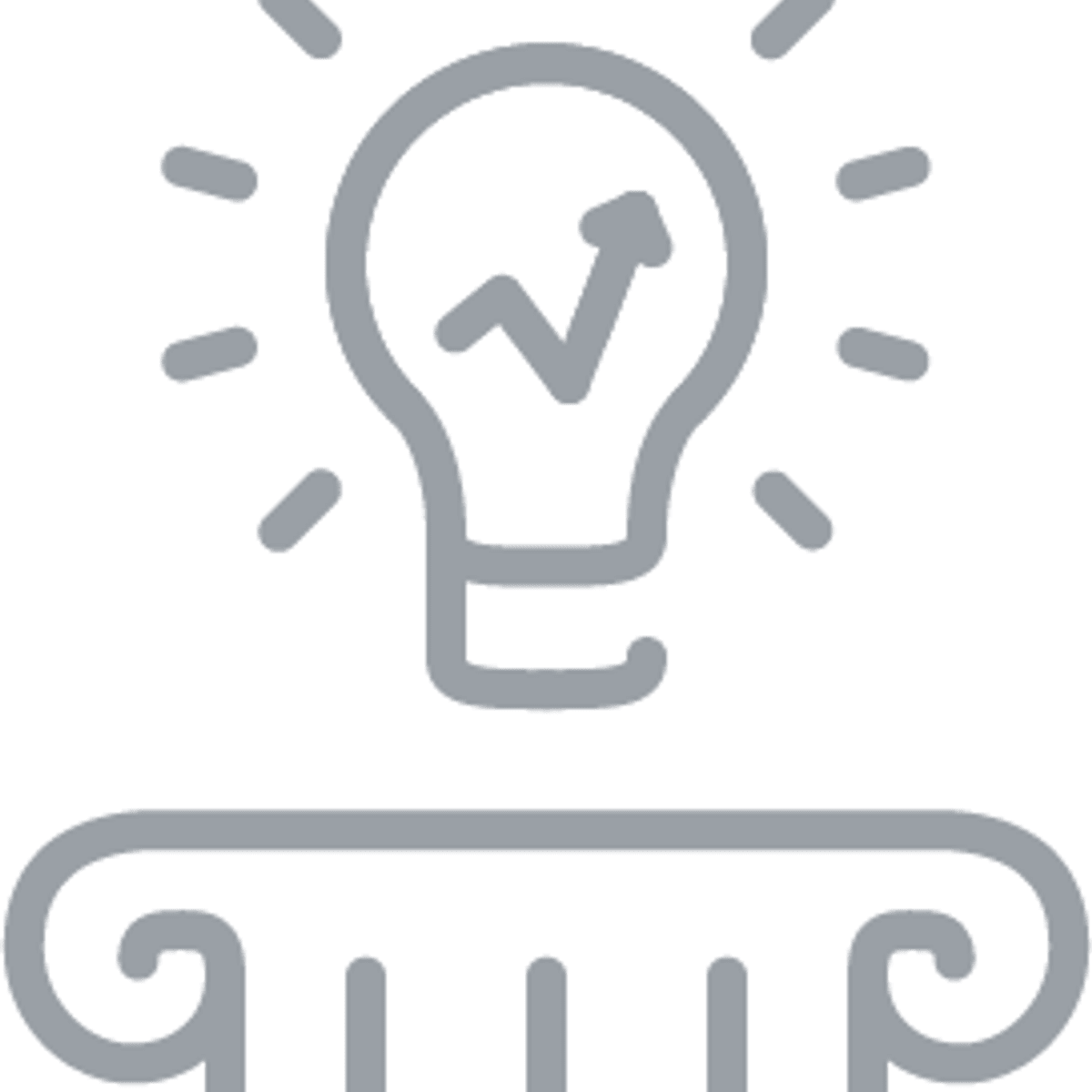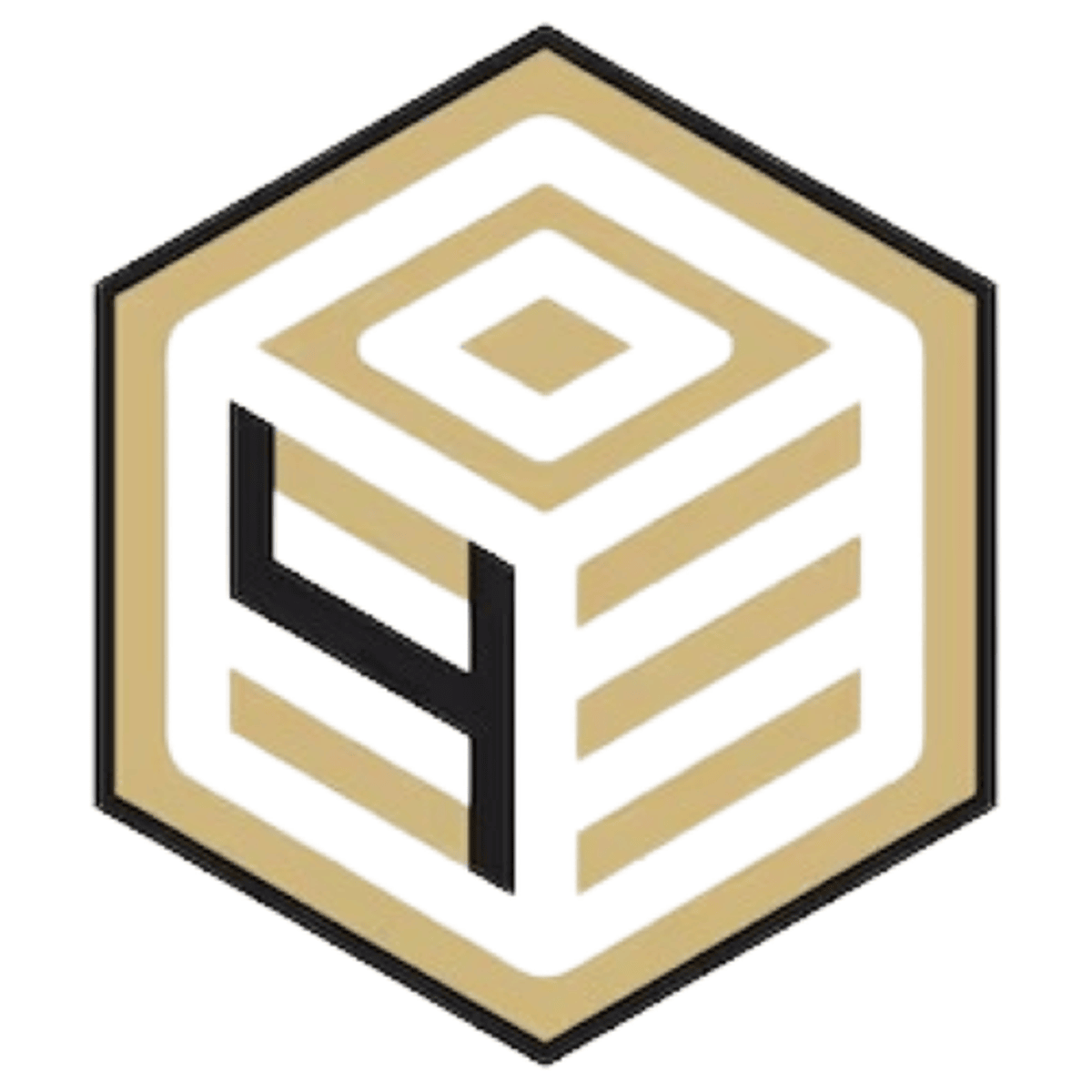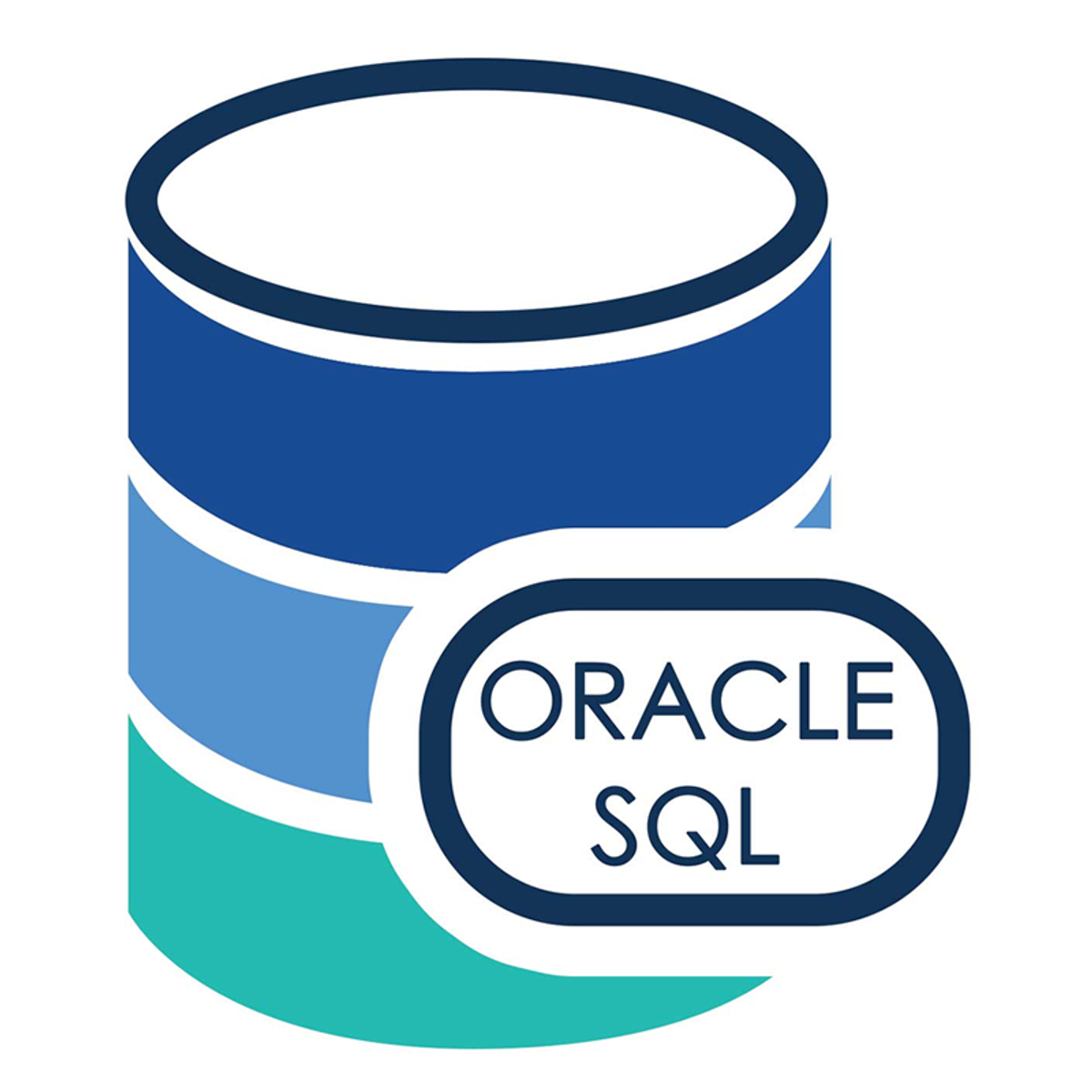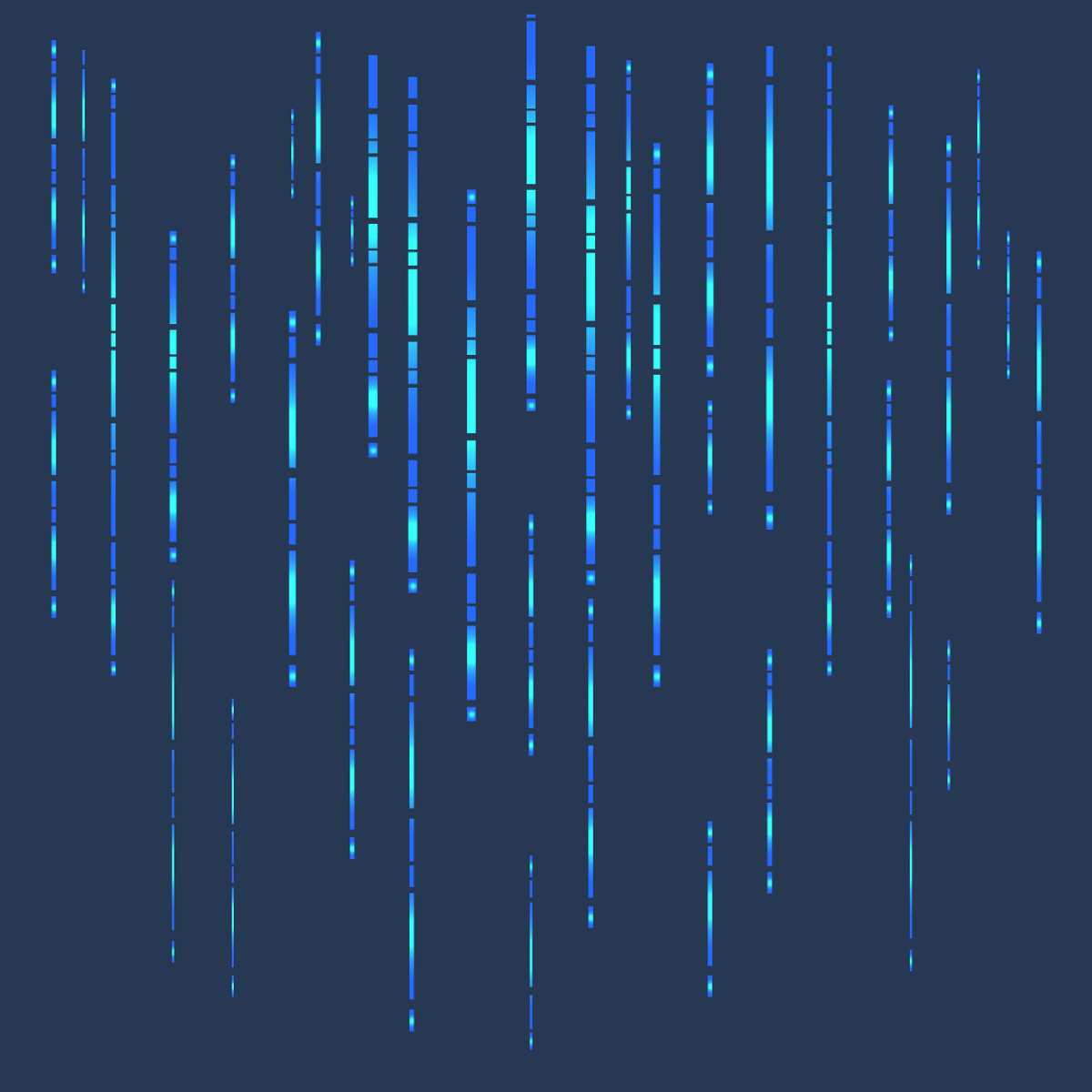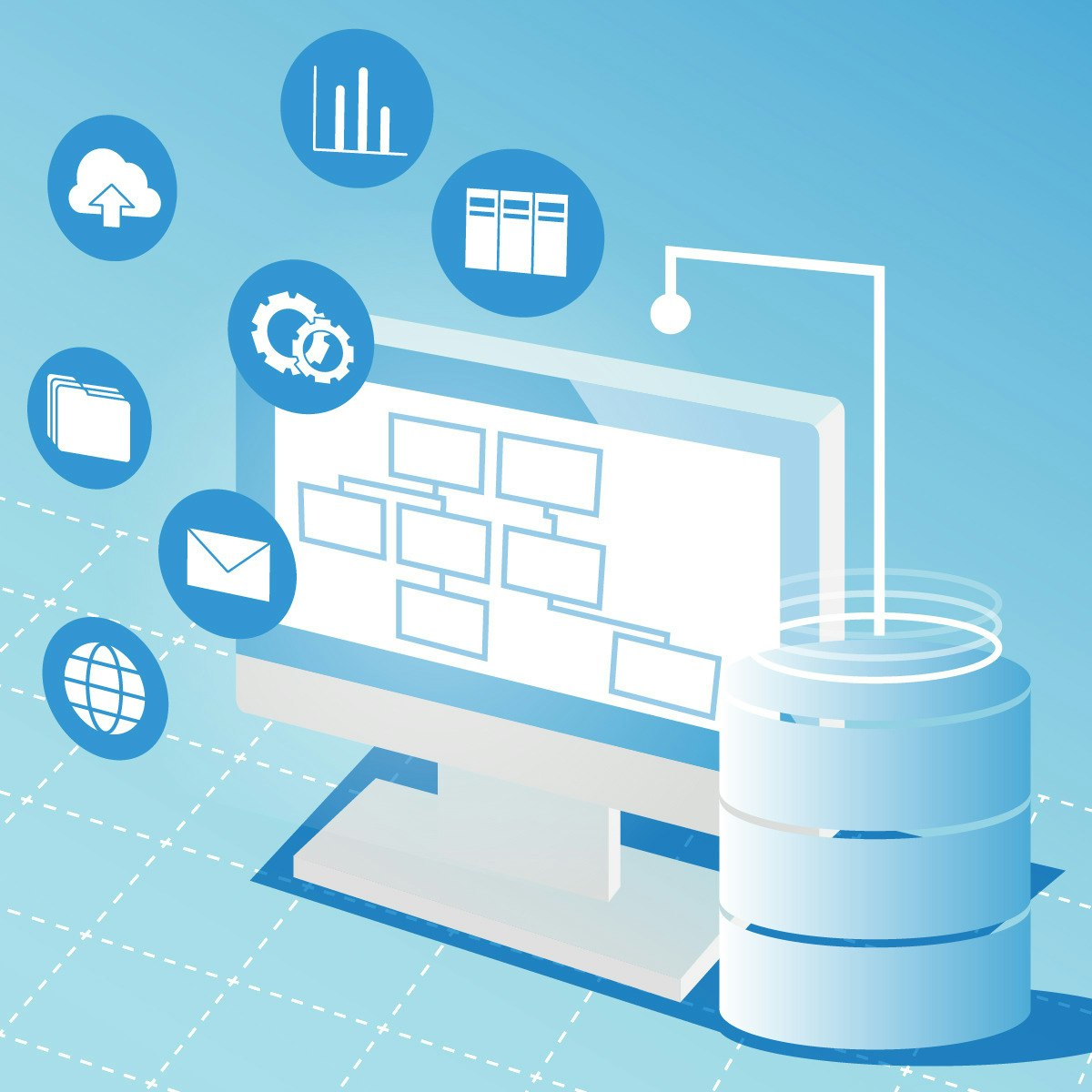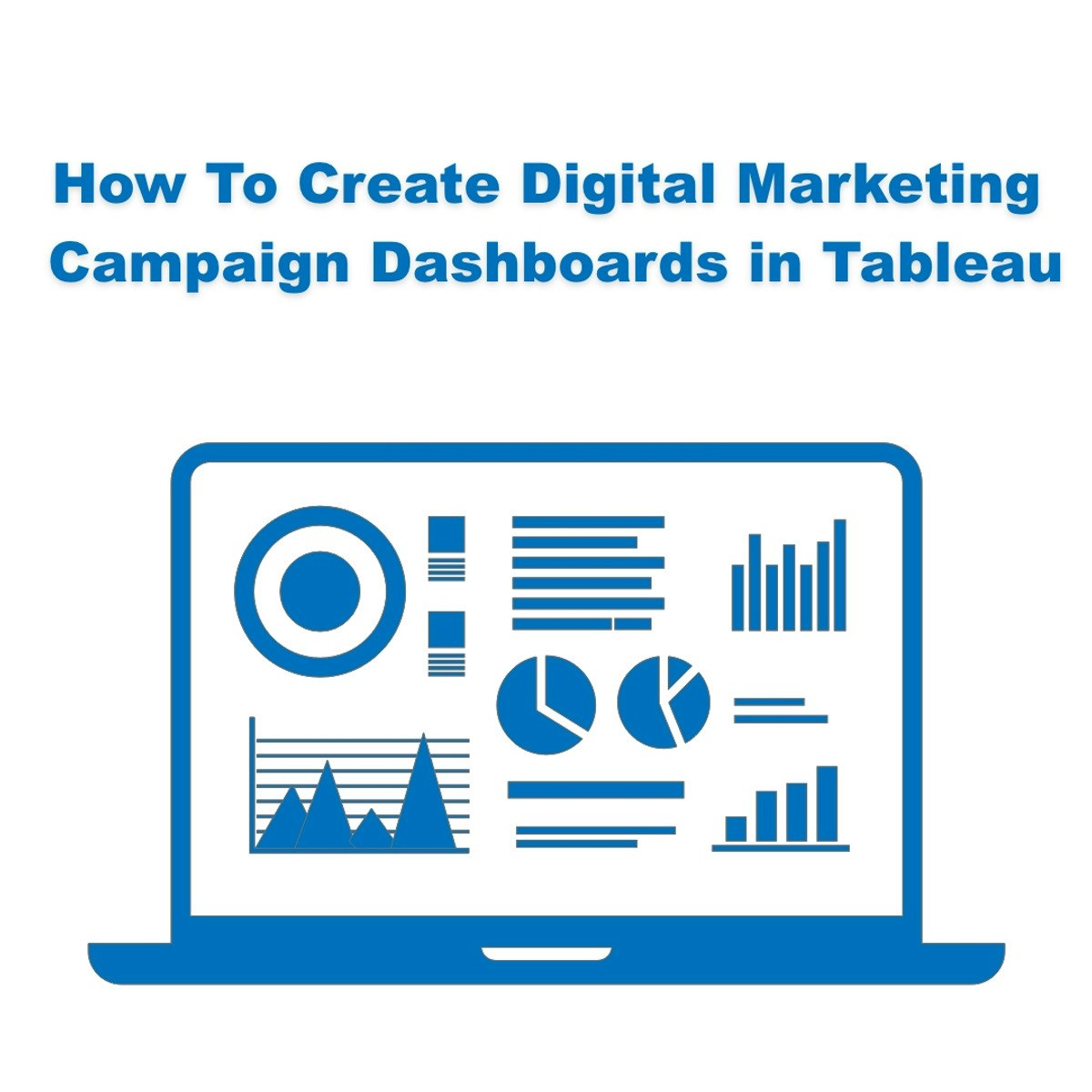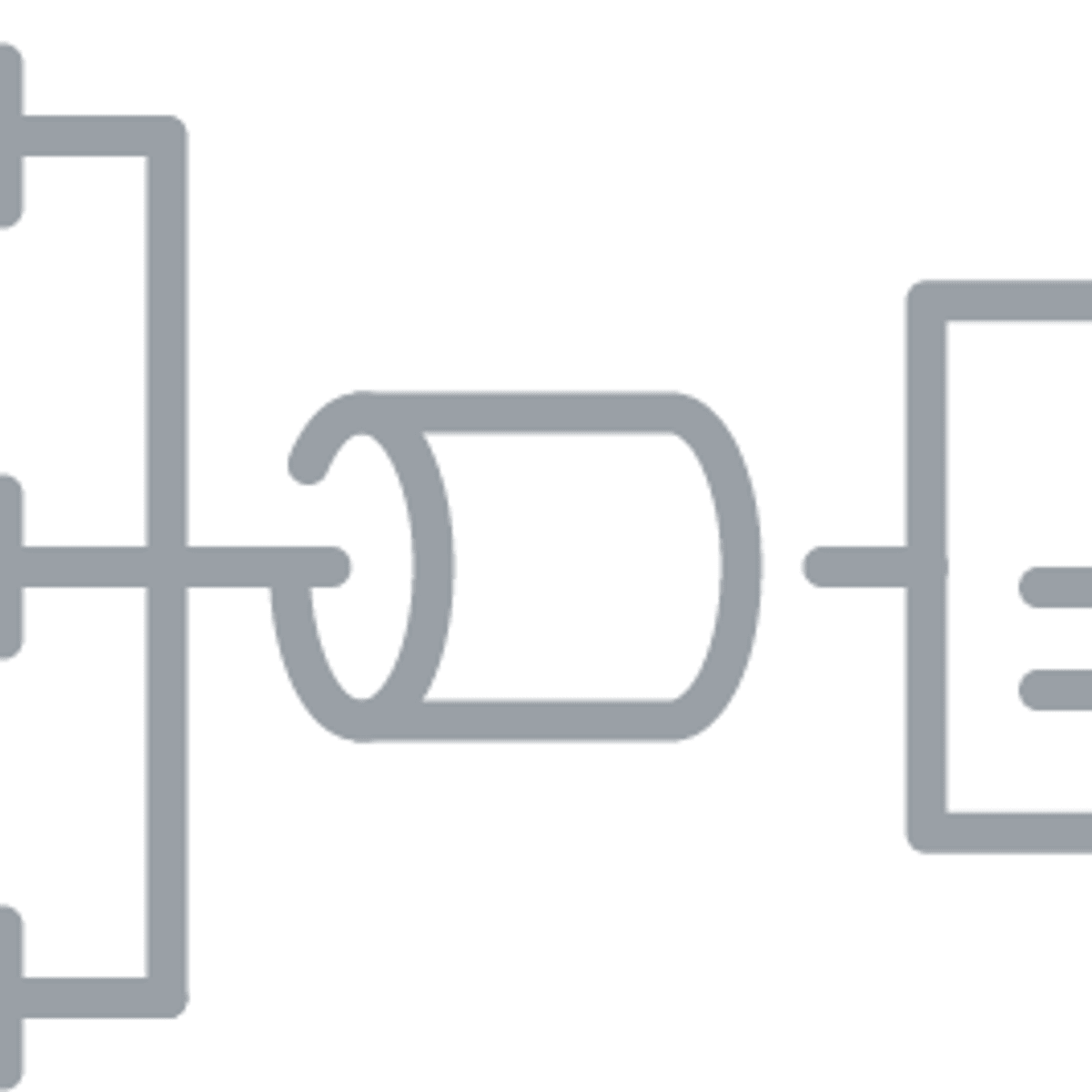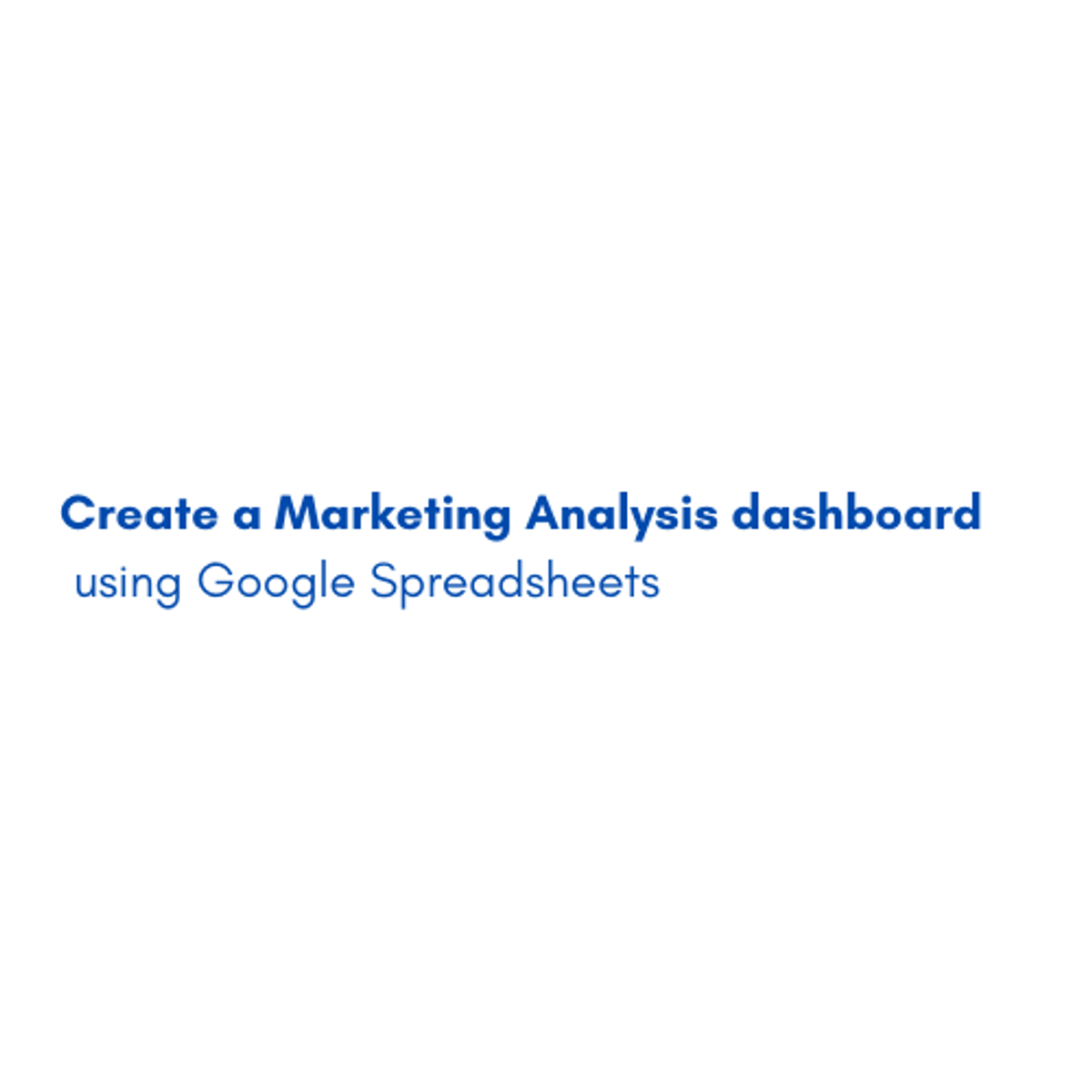Business Intelligence Analyst
vigating the World of Data: A Comprehensive Guide to Becoming a Business Intelligence Analyst
A Business Intelligence (BI) Analyst plays a pivotal role in helping organizations make informed, data-driven decisions. By collecting, cleaning, analyzing, and interpreting complex data, BI Analysts transform raw information into actionable insights that can steer business strategy and enhance operational efficiency. This career path is ideal for individuals who possess a keen analytical mind, a passion for problem-solving, and the ability to communicate complex findings in a clear and concise manner.
Working as a BI Analyst can be both engaging and exciting. You will often find yourself at the forefront of an organization's strategic initiatives, uncovering trends and patterns that can lead to significant business improvements. The role frequently involves a blend of technical data work and collaborative interaction with various stakeholders, offering a dynamic and evolving work environment. The opportunity to see your insights directly influence business outcomes and drive success can be incredibly rewarding.
Introduction to Business Intelligence Analyst
A Business Intelligence (BI) Analyst is a professional who leverages data to help organizations make better business decisions. This involves gathering data from various sources, cleaning and preparing it for analysis, and then using analytical techniques to identify trends, patterns, and insights. The ultimate goal is to provide actionable intelligence that supports strategic planning and operational improvements.
BI Analysts are instrumental in transforming raw data into understandable and useful information, often through reports, dashboards, and visualizations. They bridge the gap between data and decision-makers, ensuring that insights are not only discovered but also effectively communicated to those who can act upon them.
Defining the Role and Core Objectives of a BI Analyst
At its core, the role of a BI Analyst revolves around using data to provide a clear understanding of business performance and market dynamics. This involves a multifaceted approach that begins with understanding the business's needs and objectives. Key objectives include identifying areas for improvement, recognizing opportunities for growth, and mitigating potential risks by analyzing historical and current data.
BI Analysts are responsible for the entire lifecycle of data analysis, from initial data collection and validation to the final presentation of findings. They develop and maintain BI tools and systems, ensuring that data is accurate, accessible, and relevant to the organization's goals. Their work directly supports various departments by providing the intelligence needed to optimize processes and strategies.
The insights generated by BI Analysts help organizations understand not only what happened in the past but also to better anticipate future trends and to collaborate more efficiently across different business areas.
The BI Analyst's Role in Data-Driven Decision-Making
Data-driven decision-making is a cornerstone of modern business, and BI Analysts are central to this process. They empower organizational leaders to make informed choices based on empirical evidence rather than relying solely on intuition or anecdotal information. By providing timely and accurate insights, BI Analysts reduce uncertainty and risk in the decision-making process.
BI Analysts work closely with various stakeholders, including executives and department heads, to understand their data requirements and to deliver analyses that address specific business questions. They translate complex data findings into clear, understandable reports and visualizations, enabling decision-makers to grasp key trends and insights quickly. This ensures that strategic and operational decisions are well-informed and aligned with the organization's objectives.
Effectively, BI Analysts act as a bridge between the technical realm of data and the strategic needs of the business, ensuring that data insights are not just available but are actively used to drive better outcomes.
Key Industries Employing BI Analysts
Business Intelligence Analysts are in demand across a multitude of industries due to the universal need for data-driven insights. The skills of a BI Analyst are highly transferable, making them valuable assets in diverse sectors. Some of the prominent industries that heavily rely on BI Analysts include finance, healthcare, retail, technology, and manufacturing.
In finance, BI Analysts help with risk assessment, fraud detection, and regulatory compliance. The healthcare sector utilizes BI Analysts to optimize patient care, manage operational costs, and improve treatment outcomes. Retail businesses employ BI Analysts for inventory management, sales forecasting, and understanding customer behavior to enhance marketing strategies. Technology companies leverage BI for product development, user engagement analysis, and market trend identification.
The versatility of the BI Analyst role means that opportunities exist in nearly every sector that collects and utilizes data to inform its operations and strategy. As more organizations recognize the value of data, the demand for skilled BI Analysts is expected to continue its upward trajectory. You can explore various opportunities across industries on platforms like OpenCourser's Career Development section.
Key Responsibilities
The day-to-day work of a Business Intelligence Analyst is dynamic and involves a range of critical tasks aimed at transforming data into actionable intelligence. These responsibilities ensure that businesses can leverage their data effectively to make informed decisions and achieve strategic goals. Understanding these core duties can help aspiring BI Analysts gauge their interest and aptitude for the role.
Data Collection, Cleaning, and Analysis
A fundamental responsibility of a BI Analyst is the collection of data from diverse sources. This can include internal databases, industry reports, public information, and even purchased data sets. Once collected, the data often requires meticulous cleaning and preparation to ensure its accuracy and suitability for analysis. This might involve identifying and correcting errors, handling missing values, and transforming data into a usable format.
After the data is prepared, the BI Analyst performs in-depth analysis to uncover trends, patterns, and insights. This involves applying various analytical techniques and using statistical methods to interpret the data. The ability to sift through large volumes of information and pinpoint relevant findings is crucial for providing valuable intelligence to the organization.
This initial phase of data handling is critical, as the quality of the analysis and subsequent decisions heavily depends on the quality of the data used.
To build foundational skills in data collection, cleaning, and analysis, several online courses can be beneficial. These courses often cover essential techniques and tools used in the industry.
Creating Dashboards and Reports for Stakeholders
Once data has been analyzed and insights have been extracted, a BI Analyst is responsible for communicating these findings to stakeholders. A common and effective way to do this is by creating dashboards and reports. These tools provide a visual and easily digestible summary of key performance indicators (KPIs), trends, and other critical information.
Dashboards offer an interactive way for stakeholders to explore data, often in real-time, while reports provide a more static, detailed overview of specific analyses. The BI Analyst must design these outputs to be clear, concise, and relevant to the audience, ensuring that the information is presented in a way that facilitates understanding and action. Effective data visualization is a key skill in this aspect of the role.
The goal is to empower stakeholders with the information they need to monitor performance, identify issues, and make timely decisions.
Developing skills in creating impactful dashboards and reports is essential. Online courses can provide practical experience with leading visualization tools.
For those looking to deepen their understanding of data visualization principles, certain books offer invaluable guidance and best practices.
Translating Data Insights into Actionable Strategies
Perhaps the most critical responsibility of a BI Analyst is to go beyond simply presenting data; they must translate their analytical findings into actionable strategies and recommendations. This involves understanding the business context deeply and identifying how the uncovered insights can be used to improve operations, solve problems, or capitalize on opportunities.
BI Analysts work collaboratively with business leaders and various departments to develop these strategies. They must effectively communicate the "so what" of their findings, explaining the implications of the data and suggesting concrete steps that can be taken. This requires strong business acumen and the ability to bridge the gap between technical data analysis and practical business application.
Ultimately, the success of a BI Analyst is often measured by their ability to influence positive change and contribute to the achievement of organizational goals through data-driven recommendations.
Courses that focus on problem-solving and strategic thinking can help in developing the ability to translate data into actionable business strategies.
Essential Skills and Qualifications
To excel as a Business Intelligence Analyst, a combination of technical prowess and well-developed soft skills is necessary. Employers typically look for candidates who can not only manipulate and analyze data but also communicate their findings effectively and understand the broader business context. Formal education and relevant certifications can also significantly enhance a candidate's profile.
Technical Skills: SQL, Python, Data Visualization Tools
A strong foundation in technical skills is paramount for a BI Analyst. Proficiency in SQL (Structured Query Language) is often considered essential, as it is the standard language for querying and managing data in relational databases. BI Analysts use SQL to extract, manipulate, and aggregate data for analysis.
While not always mandatory, knowledge of programming languages like Python or R can be highly beneficial, particularly for more advanced data analysis, automation of tasks, and statistical modeling. These languages offer extensive libraries and tools that can enhance a BI Analyst's capabilities.
Expertise in data visualization tools is another critical technical skill. Platforms such as Tableau and Microsoft Power BI are widely used to create interactive dashboards and reports that effectively communicate complex data insights to stakeholders. The ability to transform raw data into compelling visual narratives is a hallmark of a successful BI Analyst.
Many online courses are available to help build these crucial technical skills, catering to various levels of expertise.
For those looking to delve deeper into specific tools and languages, consider these resources:
Soft Skills: Communication, Problem-Solving, and Business Acumen
Beyond technical abilities, soft skills play an equally important role in the success of a BI Analyst. Effective communication is crucial, as analysts must be able to clearly convey complex data findings and recommendations to both technical and non-technical audiences. This includes written communication for reports and verbal communication for presentations and stakeholder meetings.
Strong problem-solving and critical thinking skills are essential for identifying business challenges, formulating analytical approaches, and interpreting data to find meaningful solutions. BI Analysts need to be adept at breaking down complex problems into manageable parts and thinking creatively to uncover insights.
Business acumen, or a good understanding of business operations, finance, and strategy, is also vital. This allows BI Analysts to contextualize their data findings within the broader business landscape and make recommendations that are relevant and impactful. They need to understand how different parts of the business function to provide truly valuable intelligence.
Developing these soft skills often comes through experience and focused effort. Courses that emphasize analytical thinking and communication can be beneficial.
Educational Background and Certifications
A bachelor's degree is typically the minimum educational requirement for entry-level BI Analyst positions. Common fields of study include computer science, information systems, statistics, mathematics, finance, or business administration with a technical focus. Some employers may prefer candidates with a master's degree, especially for more senior or specialized roles. An MBA with a business analytics concentration or a Master's in Data Science can provide a competitive edge.
Professional certifications can also significantly enhance a BI Analyst's credentials and demonstrate a commitment to the field. Certifications like the Certified Business Intelligence Professional (CBIP) are well-regarded. Additionally, vendor-specific certifications, such as those offered by Microsoft for Power BI (e.g., Microsoft Certified: Power BI Data Analyst Associate) or Google for their BI tools, can validate expertise with specific platforms. These certifications often require a combination of knowledge and practical experience.
Online courses and professional certificate programs offer flexible pathways to acquire the necessary skills and prepare for certification exams. These can be particularly useful for individuals transitioning from other fields or looking to upskill.
Consider these comprehensive programs to build a strong foundation and prepare for industry certifications.
Tools and Technologies
A Business Intelligence Analyst relies on a diverse toolkit to effectively gather, process, analyze, and present data. Proficiency in these tools and technologies is crucial for transforming raw data into actionable insights that drive business decisions. The landscape of BI tools is constantly evolving, so staying updated with current technologies is an important aspect of the role.
Popular Business Intelligence Tools
Several sophisticated software platforms are designed specifically for business intelligence tasks. These tools typically offer a suite of functionalities, including data connection, data transformation, data visualization, and report generation. Among the most widely used BI tools are Tableau, Microsoft Power BI, and Qlik Sense.
Tableau is renowned for its powerful and intuitive data visualization capabilities, allowing users to create interactive dashboards and worksheets. Microsoft Power BI is another leading platform, well-integrated with other Microsoft products and offering robust data modeling and reporting features. Qlik Sense is known for its associative data engine, enabling users to explore data freely and uncover hidden insights.
Familiarity with one or more of these platforms is often a key requirement for BI Analyst positions. Many companies also utilize other BI solutions like Google Data Studio or Amazon QuickSight, depending on their specific needs and existing tech stack.
To gain hands-on experience with these widely used BI tools, explore the following courses:
Database Management Systems
BI Analysts frequently work with data stored in various database management systems (DBMS). A solid understanding of database concepts and the ability to interact with different types of databases are therefore essential. Relational databases, which store data in structured tables, are very common.
Prominent relational database management systems include Microsoft SQL Server, Oracle Database, MySQL, and PostgreSQL. BI Analysts often use SQL to query these databases, retrieve necessary data, and perform initial data manipulation tasks. While the BI tools themselves often have connectors to these databases, direct SQL knowledge allows for more complex data retrieval and a deeper understanding of the underlying data structures.
In addition to relational databases, organizations are increasingly using NoSQL databases and data warehouses to store and manage large volumes of diverse data types. Familiarity with these systems can also be beneficial for a BI Analyst.
These courses offer a good starting point for understanding database management and SQL:
Cloud Platforms
Cloud computing platforms have become integral to modern data architectures, and BI Analysts are increasingly likely to work with data and tools hosted in the cloud. Major cloud providers like Amazon Web Services (AWS), Microsoft Azure, and Google Cloud Platform (GCP) offer a wide array of services for data storage, processing, and analytics.
These platforms provide scalable and flexible solutions for data warehousing (e.g., Amazon Redshift, Azure Synapse Analytics, Google BigQuery), data lakes, and running BI applications. BI Analysts may use cloud-based BI tools (e.g., Amazon QuickSight, Power BI service on Azure) or connect desktop BI tools to data sources residing in the cloud.
Understanding cloud concepts and having some familiarity with the services offered by these major providers can be a significant advantage for a BI Analyst, as more organizations migrate their data infrastructure to the cloud.
For those new to cloud platforms and their data services, these courses can provide a valuable introduction:
Educational Pathways
Embarking on a career as a Business Intelligence Analyst involves acquiring a specific set of skills and knowledge. There are several educational pathways that can lead to this profession, ranging from traditional degree programs to more flexible online courses and certifications. The right path often depends on an individual's existing background, career goals, and learning preferences.
Regardless of the chosen path, a strong emphasis on data analysis, business understanding, and proficiency with relevant tools is crucial for success. Building a portfolio of projects can also significantly enhance job prospects by demonstrating practical skills.
Relevant Degrees and Fields of Study
A bachelor's degree is generally considered the foundational educational requirement for most entry-level Business Intelligence Analyst positions. Degrees in quantitative or analytical fields are particularly relevant. Common choices include Computer Science, Information Systems, Statistics, Mathematics, Economics, Finance, or Business Administration with a concentration in analytics or information systems.
A Computer Science degree provides a strong technical grounding in programming, data structures, and database management. Statistics and Mathematics degrees offer robust analytical and quantitative skills essential for data modeling and interpretation. Business-focused degrees, when supplemented with technical skills, provide crucial context for understanding organizational needs and translating data insights into business strategies.
For those seeking to deepen their expertise or transition from another field, a master's degree can be beneficial. Options like a Master of Science in Data Science, Business Analytics, or Information Systems, or an MBA with a specialization in analytics, are increasingly valued by employers, especially for more senior roles.
Online platforms like OpenCourser's Data Science section offer a wide range of courses that can complement formal degree programs or provide focused learning in specific areas of business intelligence.
These courses provide a solid introduction to the foundational concepts relevant to BI and data analytics degrees:
Certifications vs. Degree Programs
Both degree programs and professional certifications play valuable roles in preparing individuals for a BI Analyst career, and the choice between them (or the combination thereof) depends on individual circumstances. Degree programs, particularly bachelor's and master's degrees, offer a comprehensive and structured education, covering theoretical foundations and a broad range of subjects. They are often preferred for entry-level positions and can be crucial for long-term career advancement into leadership roles.
Certifications, on the other hand, tend to be more focused on specific skills, tools, or methodologies. They can be an excellent way to gain specialized knowledge quickly, validate existing skills, or bridge gaps in a formal education. Certifications like the Certified Business Intelligence Professional (CBIP) or tool-specific credentials from Microsoft (Power BI), Google, or Tableau are highly regarded in the industry. They can be particularly beneficial for career changers or those looking to demonstrate proficiency in the latest technologies.
In many cases, a combination of a relevant degree and pertinent certifications provides the strongest foundation. A degree establishes broad knowledge, while certifications demonstrate specific, up-to-date competencies. Online courses and professional certificates can also serve as flexible and cost-effective alternatives or supplements to traditional degrees.
For those considering certifications, these courses can help prepare for popular exams or provide an understanding of the certification landscape:
Self-Taught Routes and the Importance of a Project Portfolio
While formal education is a common path, it is possible to become a Business Intelligence Analyst through self-study, especially if coupled with a strong project portfolio. The abundance of online courses, tutorials, and resources makes acquiring the necessary technical skills independently more feasible than ever. Platforms like OpenCourser offer access to a vast library of relevant courses covering SQL, data visualization tools like Tableau and Power BI, programming languages like Python, and data analysis techniques.
For self-taught individuals, building a compelling project portfolio is paramount. A portfolio showcases practical skills and the ability to apply learned concepts to real-world (or realistic) problems. Projects can involve analyzing publicly available datasets, creating insightful dashboards, or developing data-driven solutions to hypothetical business challenges. These projects serve as tangible proof of competency to potential employers, often carrying significant weight in the hiring process, sometimes even more than traditional qualifications alone.
If you are considering a career change or are new to the field, this path requires discipline and dedication. However, successfully demonstrating your abilities through a well-crafted portfolio can open doors to entry-level positions. Remember, the journey might be challenging, but with persistence and a focus on practical application, achieving your goal is within reach. Ground yourself in the fundamentals, continuously learn, and let your projects speak to your capabilities.
To start building your skills and portfolio, consider these project-based or tool-focused courses:
Building a strong portfolio is essential. Look for opportunities to apply your skills, whether through personal projects, freelance work, or contributions to open-source initiatives. Highlighting these experiences on your resume and during interviews can significantly bolster your candidacy. OpenCourser's Learner's Guide offers tips on how to structure your learning and build a compelling portfolio.
Career Progression and Salary
The career path for a Business Intelligence Analyst typically offers significant opportunities for growth and advancement. As analysts gain experience and develop specialized skills, they can move into more senior roles with increased responsibilities and higher compensation. The journey often begins with entry-level analytical positions and can lead to management or highly specialized technical roles.
Entry-Level Roles and Advancement to Mid-Career Paths
Many BI Analysts start their careers in roles such as Junior BI Analyst, Data Analyst, or Reporting Analyst. In these initial positions, responsibilities typically involve assisting senior analysts with tasks like data gathering, data cleaning, generating basic reports, and maintaining existing dashboards. These roles provide a crucial foundation in data handling, analytical tools, and understanding business processes.
With a few years of experience (typically 3-5 years), analysts can progress to a mid-career BI Analyst or Senior BI Analyst role. At this stage, they take on more independent data analysis, develop more complex reports and dashboards, and work more closely with business stakeholders to understand their requirements and translate insights into actionable recommendations. They may also begin to mentor junior analysts and take on lead roles in smaller projects.
The transition to mid-career often involves a deeper specialization in particular industries, BI tools, or analytical techniques. Continuous learning and skill development are key to this progression.
To prepare for entry-level roles and build a strong foundation for advancement, consider these courses:
Senior Roles and Leadership Opportunities
After gaining significant experience (often 5-10+ years), BI Analysts can advance to Senior BI Analyst, Lead BI Analyst, or even BI Manager/Director positions. In these senior roles, responsibilities expand to include overseeing complex BI projects, developing strategic BI initiatives, ensuring data quality and governance, and defining key performance indicators (KPIs). They often lead teams of analysts and play a crucial role in driving data-driven decision-making across the organization.
Leadership opportunities, such as BI Manager or Director of Business Intelligence, involve managing the entire BI function, setting the strategic direction for data initiatives, and collaborating closely with executive leadership. These roles require strong leadership, strategic thinking, and a deep understanding of both the technical and business aspects of business intelligence.
Alternatively, experienced BI Analysts may choose to specialize further into roles like BI Developer/Engineer (focusing on building and optimizing BI tools and infrastructure) or BI Consultant (working with various clients to implement BI solutions). Some may also transition into related fields like Data Science, particularly if they have a strong interest in advanced statistics, machine learning, and predictive modeling.
For those aspiring to leadership or specialized senior roles, continuous education, including advanced degrees or specialized certifications, can be highly beneficial.
Salary Ranges and Factors Influencing Earnings
Salaries for Business Intelligence Analysts can be quite competitive and vary based on several factors. These include years of experience, level of education, certifications held, specific technical skills, the industry of employment, and geographic location.
Entry-level BI Analysts can expect a solid starting salary, which typically increases significantly with experience. According to Glassdoor, a business intelligence analyst in the US makes an average salary of $98,970, combining base pay with additional compensation. Senior BI Analysts and BI Managers command higher salaries, reflecting their advanced skills and greater responsibilities. For instance, a Director of Business Intelligence can earn a salary ranging significantly higher, often well into six figures.
Industries with high demand for BI skills, such as technology, finance, and healthcare, may offer higher compensation packages. Furthermore, possessing specialized skills in high-demand areas like Artificial Intelligence, machine learning, or specific cloud platforms can also positively influence earning potential. Obtaining relevant certifications can also lead to higher pay.
It's advisable to research salary benchmarks in your specific region and industry. Websites like Glassdoor, Salary.com, and the U.S. Bureau of Labor Statistics (BLS) provide valuable data on compensation trends. The BLS, for example, groups Business Intelligence Analysts under "Management Analysts," and you can find relevant occupational outlook information on their website.
Understanding these factors can help you negotiate your salary effectively and make informed career decisions. Focusing on continuous skill development and gaining experience in high-demand areas are key strategies for maximizing earning potential in the field of business intelligence.
Industry Applications
Business Intelligence (BI) is not confined to a single sector; its principles and practices are applied across a wide array of industries to drive efficiency, inform strategy, and gain a competitive edge. BI Analysts play a crucial role in tailoring data insights to the specific needs and challenges of each industry, demonstrating the versatility and broad applicability of this career path.
Business Intelligence in Healthcare
The healthcare industry generates vast amounts of data, from patient records and clinical trials to operational metrics and financial information. BI Analysts in healthcare help organizations harness this data to improve patient outcomes, optimize operational efficiency, and manage costs effectively. They might analyze patient data to identify trends in diseases, evaluate the effectiveness of treatments, or predict potential health risks in populations.
Furthermore, BI plays a critical role in streamlining hospital operations, such as managing bed occupancy, optimizing staffing levels, and improving supply chain management for medical equipment and pharmaceuticals. By analyzing financial data, BI Analysts can also help healthcare providers identify areas for cost reduction and revenue enhancement while ensuring compliance with regulatory requirements. The ability to turn complex healthcare data into actionable insights is vital for enhancing the quality and accessibility of care.
Exploring Health & Medicine courses on OpenCourser can provide additional context on the data challenges and opportunities within this sector.
These courses can provide insights into data applications within the healthcare domain:
Business Intelligence in Retail
In the highly competitive retail sector, understanding customer behavior, optimizing inventory, and streamlining sales processes are crucial for success. BI Analysts in retail leverage data to provide insights that drive these objectives. They analyze sales data to identify popular products, forecast demand, and optimize pricing strategies. Customer data analysis helps in segmenting customers, personalizing marketing campaigns, and enhancing customer loyalty.
Inventory management is another key area where BI delivers significant value. By analyzing historical sales data and current trends, BI Analysts help retailers maintain optimal stock levels, reduce holding costs, and minimize stockouts or overstock situations. They also contribute to supply chain optimization, ensuring that products are available at the right place and the right time. Furthermore, BI tools are used to monitor store performance, evaluate the effectiveness of promotions, and identify opportunities for growth in different market segments.
For those interested in the intersection of data and commerce, Marketing courses on OpenCourser can offer relevant perspectives.
Consider these courses to understand how BI is applied in sales and marketing contexts:
Business Intelligence in Finance
The finance industry relies heavily on data for risk management, regulatory compliance, fraud detection, and strategic decision-making. BI Analysts in finance are instrumental in analyzing vast datasets to identify financial trends, assess investment opportunities, and monitor market conditions. They help financial institutions understand customer profitability, manage credit risk, and optimize their service offerings.
BI tools are used to create detailed financial reports and dashboards that provide insights into key performance indicators (KPIs), such as revenue growth, cost of capital, and return on investment. In the area of regulatory compliance, BI Analysts help ensure that financial institutions adhere to complex reporting requirements by providing accurate and timely data. They also play a role in detecting and preventing fraudulent activities by analyzing transaction patterns and identifying anomalies. Furthermore, BI supports forecasting and budgeting processes, enabling financial organizations to plan more effectively for the future.
Delving into Finance & Economics courses on OpenCourser can deepen understanding of the financial landscape.
These courses provide a glimpse into financial analysis and reporting, relevant to BI in finance:
Challenges and Emerging Trends
The field of Business Intelligence is dynamic, constantly shaped by technological advancements and evolving business needs. BI Analysts must navigate a range of challenges while also staying abreast of emerging trends to remain effective and add maximum value to their organizations. Understanding these aspects is crucial for both aspiring and experienced professionals in the field.
Data Privacy and Security Challenges
One of the most significant challenges in business intelligence is ensuring data privacy and security. BI Analysts often work with sensitive information, including customer data, financial records, and proprietary business information. Protecting this data from unauthorized access, breaches, and misuse is paramount. Organizations face increasing scrutiny and regulatory requirements regarding data handling, such as the General Data Protection Regulation (GDPR) in Europe and various other regional and industry-specific laws.
BI Analysts must be knowledgeable about these regulations and ensure that their data collection, storage, analysis, and reporting practices are compliant. This includes implementing appropriate security measures, anonymizing data where necessary, and establishing clear data governance policies. The ethical implications of data use also fall under this umbrella, requiring analysts to consider fairness, transparency, and potential biases in their work.
The challenge lies in balancing the need for comprehensive data analysis with the imperative to protect individual privacy and maintain data security. This often requires close collaboration with IT security teams, legal departments, and data governance officers.
To understand more about data governance and security, consider exploring courses related to information security and data management.
AI and Machine Learning Integration
A major emerging trend in business intelligence is the increasing integration of Artificial Intelligence (AI) and Machine Learning (ML). These technologies are transforming how BI is performed, enabling more sophisticated analyses, predictive modeling, and automation of tasks. AI and ML algorithms can uncover complex patterns and insights from data that might be difficult for humans to detect using traditional methods.
For BI Analysts, this trend presents both opportunities and challenges. It offers the potential to deliver deeper, more predictive insights, such as forecasting sales with greater accuracy, identifying customers at risk of churn, or optimizing supply chains in real-time. However, it also requires BI Analysts to develop new skills, including an understanding of ML concepts, familiarity with AI tools, and the ability to interpret and validate the outputs of these advanced models. Some BI platforms are now embedding AI and ML capabilities, making these advanced analytics more accessible.
The integration of AI and ML is pushing the boundaries of what BI can achieve, moving from descriptive analytics (what happened) and diagnostic analytics (why it happened) towards predictive analytics (what will happen) and prescriptive analytics (what should be done). According to IBM, this shift is a key driver in the evolution of BI.
Courses focusing on the application of AI and ML in a business context can be highly valuable for BI Analysts looking to stay ahead of this trend.
Real-Time Analytics and Edge Computing
Another significant trend is the growing demand for real-time analytics. Businesses increasingly need to make decisions based on the most current data available, rather than relying on historical reports. Real-time analytics enables organizations to monitor operations, detect anomalies, and respond to changing conditions instantaneously. This is particularly crucial in fast-paced industries like e-commerce, finance, and logistics.
Edge computing is an emerging technology that supports real-time analytics by processing data closer to where it is generated, rather than sending it to a centralized data center. This reduces latency and allows for quicker insights and actions. For BI Analysts, this means working with streaming data, understanding technologies that support real-time processing (like Apache Kafka or Spark Streaming), and developing dashboards and alerts that reflect live information.
The shift towards real-time analytics requires BI systems and analysts to be more agile and responsive. It necessitates an infrastructure that can handle continuous data ingestion and processing, as well as analytical tools capable of delivering insights with minimal delay. This trend is pushing BI towards being an even more integral part of daily operational decision-making.
Understanding data streaming and real-time processing technologies will become increasingly important for BI professionals.
Ethical Considerations
As Business Intelligence Analysts wield the power of data to influence decisions and strategies, they also bear significant ethical responsibilities. The way data is collected, interpreted, and reported can have profound impacts on individuals, organizations, and society. Adhering to ethical principles is not just a matter of compliance, but a cornerstone of building trust and ensuring fairness in the data-driven world.
Bias in Data Interpretation and Algorithmic Decision-Making
One of the most critical ethical challenges in business intelligence is the potential for bias in data interpretation and in the algorithms used for decision-making. Bias can creep into data in various ways: through historical prejudices reflected in the data, an unrepresentative sample, or the way data is collected and processed. If these biases are not identified and addressed, they can lead to unfair or discriminatory outcomes.
For instance, an algorithm used for loan approvals, if trained on historically biased data, might unfairly disadvantage certain demographic groups. Similarly, a BI Analyst's interpretation of data can be influenced by their own unconscious biases, leading to skewed recommendations. It is incumbent upon BI professionals to be vigilant about identifying potential sources of bias, using diverse datasets, and employing techniques to mitigate bias in their analyses and models.
This requires a commitment to critical thinking, a questioning approach to data, and an awareness of the societal context in which data is generated and used. Promoting diversity within analytics teams can also help bring different perspectives and reduce the risk of collective blind spots.
Understanding the ethical implications of data analysis is crucial. Courses covering data ethics and responsible AI can provide valuable frameworks.
Compliance with Data Protection Regulations (e.g., GDPR, CCPA)
Adherence to data protection regulations is a fundamental ethical and legal responsibility for BI Analysts. Regulations like the General Data Protection Regulation (GDPR) in Europe, the California Consumer Privacy Act (CCPA), and other similar laws around the world impose strict rules on how personal data can be collected, processed, stored, and shared. These regulations aim to give individuals more control over their personal information and ensure that organizations handle data responsibly.
BI Analysts must be knowledgeable about the specific regulations that apply to the data they work with and ensure that all BI activities are compliant. This includes obtaining proper consent for data collection, implementing robust data security measures, honoring individuals' rights regarding their data (such as the right to access or delete their information), and being transparent about data usage. Non-compliance can result in severe financial penalties and significant reputational damage to an organization.
Working closely with legal and compliance teams is often necessary to navigate the complexities of these regulations and to establish data governance practices that uphold both legal requirements and ethical standards. According to the Pew Research Center, public awareness and concern about data privacy are high, underscoring the importance of responsible data handling.
Ensuring Transparency and Accuracy in Data Reporting
Transparency and accuracy in data reporting are key ethical tenets for Business Intelligence Analysts. Stakeholders rely on the information provided by BI Analysts to make important decisions, and it is crucial that this information is both accurate and presented in a way that is not misleading. This means being meticulous about data quality, validating analytical results, and clearly communicating any limitations or uncertainties associated with the data or the analysis.
BI Analysts should avoid presenting data in a way that manipulates or obscures the true picture, even if it might lead to a more favorable interpretation for a particular agenda. This includes choosing appropriate visualizations, clearly labeling axes and data points, and providing necessary context. If there are known issues with data quality or potential biases in the analysis, these should be disclosed transparently.
Maintaining objectivity and integrity in reporting helps build trust with stakeholders and ensures that decisions are based on a sound understanding of the facts. It also upholds the credibility of the BI function within the organization.
Courses that focus on data visualization best practices often touch upon the importance of clear and honest reporting.
Frequently Asked Questions (FAQ)
Embarking on a career as a Business Intelligence Analyst, or considering a transition into the field, often brings up several common questions. Addressing these queries can help provide clarity and set realistic expectations for those exploring this dynamic and rewarding profession.
Is coding mandatory for BI Analysts?
While not always strictly mandatory for every BI Analyst role, coding skills are highly beneficial and increasingly expected. Proficiency in SQL is generally considered essential for data extraction and manipulation. Knowledge of programming languages like Python or R can significantly enhance a BI Analyst's capabilities, particularly for advanced data analysis, automation, and statistical modeling.
Some BI tools offer user-friendly interfaces that allow for analysis without extensive coding. However, a foundational understanding of coding principles can help analysts better understand data processes, troubleshoot issues, and customize solutions. The specific coding requirements often depend on the company, the complexity of the projects, and the specific BI tools being used. Even if not writing code daily, the ability to understand and collaborate with technical teams who do is valuable.
For those concerned about coding, many resources are available to learn at your own pace. Starting with SQL and then gradually exploring Python or R for data analysis is a common approach. OpenCourser features a variety of programming courses suitable for beginners and those looking to upskill.
How does Business Intelligence (BI) differ from Data Science?
While both Business Intelligence and Data Science involve working with data to derive insights, their focus and methodologies can differ. BI typically focuses on analyzing past and current data to understand business performance, identify trends, and support operational and strategic decision-making. BI Analysts often use historical data to generate reports, dashboards, and visualizations that describe what has happened and why. Their primary goal is often to provide actionable insights for immediate business improvements.
Data Science, on the other hand, often involves more advanced statistical techniques, machine learning, and predictive modeling to forecast future outcomes and uncover deeper, more complex patterns in data. Data Scientists may work with larger, more unstructured datasets and develop sophisticated algorithms to solve complex problems. While BI is often more descriptive and diagnostic, Data Science tends to be more predictive and prescriptive.
There is, however, significant overlap, and the lines can sometimes blur. BI is increasingly incorporating predictive capabilities, and data scientists often need to communicate their findings in a way that is understandable to business stakeholders, similar to BI Analysts. Some BI Analysts may evolve into Data Scientist roles with additional training in advanced analytics and machine learning.
Can I transition to a BI Analyst role from a non-technical background?
Yes, it is certainly possible to transition into a Business Intelligence Analyst role from a non-technical background, though it requires dedication and a focused effort to acquire the necessary skills. Many successful BI Analysts have come from diverse fields such as business, finance, marketing, or even humanities, bringing valuable domain expertise and different perspectives.
The key to a successful transition is to systematically build the required technical skills, including SQL, data visualization tools (like Tableau or Power BI), and potentially a programming language like Python. Online courses, bootcamps, and professional certifications offer structured learning paths to acquire these competencies. Creating a portfolio of projects that showcase your newly acquired skills is crucial to demonstrate practical ability to potential employers.
Leveraging your existing non-technical skills, such as communication, problem-solving, critical thinking, and business acumen, is also important, as these are highly valued in BI roles. Emphasize how your previous experiences have developed these transferable skills. It may be a challenging journey, requiring commitment and persistence, but with a clear plan and a proactive approach to learning and networking, a transition is achievable. Remember to be patient with yourself and celebrate milestones along the way.
For those looking to make a career change, these courses can provide a strong starting point:
What industries have the highest demand for BI Analysts?
The demand for Business Intelligence Analysts is widespread across numerous industries, as organizations increasingly recognize the value of data-driven decision-making. However, some sectors consistently show a particularly high demand for BI professionals. These often include technology, finance, healthcare, retail, and consulting.
The technology industry, including software companies, e-commerce platforms, and data service providers, heavily relies on BI for product development, user analytics, and operational efficiency. Financial services, encompassing banking, insurance, and investment firms, utilize BI for risk management, fraud detection, customer analytics, and regulatory compliance. The healthcare sector employs BI analysts to improve patient care, optimize operations, and manage costs. Retail companies leverage BI for sales analysis, inventory management, customer segmentation, and marketing optimization. Consulting firms also hire a significant number of BI analysts to help their clients across various industries implement BI solutions and strategies.
While these industries show strong demand, opportunities for BI Analysts can be found in virtually any sector that generates and utilizes data, including manufacturing, telecommunications, media, and the public sector. The versatility of BI skills means that professionals can often find roles that align with their specific industry interests.
What is the impact of remote work on BI roles?
The rise of remote work has had a notable impact on Business Intelligence roles, much like many other knowledge-based professions. Many tasks performed by BI Analysts, such as data analysis, report development, and virtual collaboration with stakeholders, can be effectively executed remotely. This has opened up opportunities for BI professionals to work for companies located anywhere in the world, and for companies to access a broader talent pool.
However, remote work also presents some challenges. Effective communication and collaboration become even more critical when team members are not co-located. Maintaining strong working relationships with stakeholders and ensuring clear understanding of requirements may require more deliberate effort in a remote setting. Data security and access to sensitive information also need careful management when employees are working from various locations.
Overall, the trend towards remote and hybrid work models is likely to continue for BI roles, offering greater flexibility for many. Success in a remote BI role often depends on strong self-discipline, excellent communication skills, and proficiency with collaboration tools, in addition to the core technical and analytical competencies.
How can I future-proof my career as a BI Analyst?
Future-proofing a career as a Business Intelligence Analyst involves a commitment to continuous learning and adaptation in a rapidly evolving field. Staying current with emerging technologies, such as AI and machine learning, and understanding how they integrate with BI is crucial. Developing skills in cloud platforms (AWS, Azure, GCP) is also increasingly important as more data and analytics workloads move to the cloud.
Beyond technical skills, honing soft skills like critical thinking, complex problem-solving, and strategic thinking will always be valuable. The ability to not just analyze data but to interpret it within a business context and communicate insights effectively to drive strategy will remain in high demand. Specializing in a particular industry or functional area can also provide a competitive edge.
Networking with other professionals, participating in industry conferences, and pursuing relevant certifications can help you stay informed about new trends and best practices. Embracing a mindset of lifelong learning and being adaptable to change are perhaps the most important aspects of future-proofing any career in the technology and data space. OpenCourser's official blog, OpenCourser Notes, often features articles on the latest trends in online learning and career development, which can be a valuable resource.
Consider these books for a deeper understanding of data analysis and visualization, which are core to the BI field:
Conclusion
The role of a Business Intelligence Analyst is a dynamic and intellectually stimulating career path, situated at the intersection of data, technology, and business strategy. It offers the opportunity to make a tangible impact by transforming complex data into clear, actionable insights that drive informed decision-making and organizational success. With a growing demand across diverse industries, a career in business intelligence presents numerous avenues for growth and specialization.
Embarking on this journey requires a blend of strong analytical and technical skills, particularly in areas like SQL, data visualization, and increasingly, an understanding of programming and cloud platforms. Equally important are soft skills such as communication, problem-solving, and business acumen, which enable analysts to translate data findings into meaningful business strategies and collaborate effectively with stakeholders. Whether you are a student exploring future options, a professional considering a career pivot, or an individual looking to enhance your analytical capabilities, the path to becoming a BI Analyst is accessible through various educational routes, including formal degrees, online courses, and professional certifications. Building a robust portfolio of projects is key to showcasing your practical abilities.
The field of business intelligence is continuously evolving, with emerging trends like AI integration and real-time analytics shaping its future. Therefore, a commitment to lifelong learning and adaptability is essential for long-term success. While the journey may present challenges, the rewards of a career that empowers businesses with the intelligence to thrive in a data-driven world are substantial. If you are passionate about uncovering insights from data and contributing to strategic outcomes, the role of a Business Intelligence Analyst offers a fulfilling and impactful professional endeavor. We encourage you to explore the resources available, including the wealth of online courses on OpenCourser, to begin or advance your journey in this exciting field.

